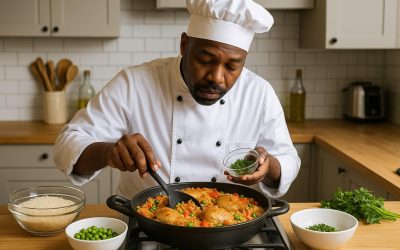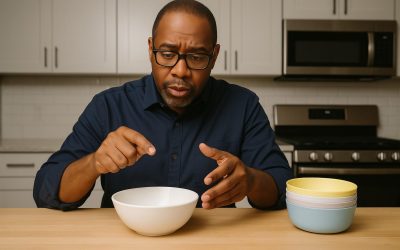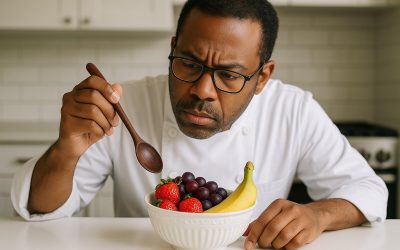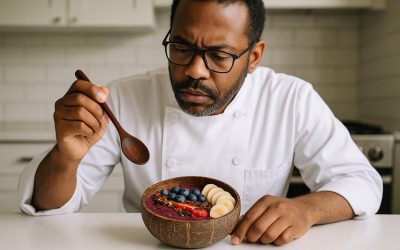Learn how to make perfect congee in rice cooker with this simple guide. Enjoy creamy, flavorful congee effortlessly with minimal prep and cleanup!
As an Amazon Associate I earn from qualifying purchases.
If you’re looking for a warm, comforting, and nutritious meal that’s easy to prepare, learning how to make congee in rice cooker is an essential skill. Congee, a classic rice porridge, is a staple in many Asian cuisines and is loved for its simplicity and versatility. With the help of a rice cooker, you can make congee effortlessly while ensuring consistent results every time. At Expert Reviews Best Rice Cooker, we’ve tested and reviewed the top appliances to help you find the best rice cooker for perfect congee and more. Whether you’re a seasoned chef or a home cook, this guide will walk you through everything you need to know about preparing congee in rice cooker.
Explore the best rice cooker for perfect basmati and jasmine rice to ensure your rice cooker can handle all your culinary needs, from delicate grains to hearty porridges like congee.
Editor’s Pick GoveeLife Smart Rice Cooker
———
Table of Contents
———
…
Why Make Congee in rice cooker?
Preparing congee on the stovetop requires constant stirring and monitoring to prevent the rice from sticking or burning. A rice cooker eliminates these hassles, allowing you to focus on other tasks while it cooks. With advanced features in modern rice cookers, such as slow-cook and porridge settings, you can achieve perfectly creamy congee with minimal effort.
Step-by-Step Guide to Cooking Congee in rice cooker
Follow these simple steps to prepare perfect congee:
1. Choose the Right Rice
For a creamy and smooth congee, short-grain or medium-grain rice is ideal. You can also use jasmine rice for a more fragrant porridge.
2. Rinse the Rice
Rinse the rice under cold water to remove excess starch. This step helps prevent clumping and ensures a smoother texture in the final dish.
3. Measure Your Ingredients
The typical water-to-rice ratio for congee is 8:1. For one cup of rice, use about eight cups of water. Adjust the water based on your desired consistency—less water for thicker congee and more for a thinner porridge.
4. Add Ingredients to the Rice Cooker
Place the rinsed rice and water into the rice cooker. You can also add aromatics like ginger, garlic, or green onions for flavor.
5. Select the Appropriate Setting
Choose the porridge or slow-cook setting on your rice cooker. If your model doesn’t have these options, the standard white rice setting can work, but you may need to cook it for a longer duration.
6. Stir Occasionally
While the rice cooker does most of the work, stirring occasionally ensures even cooking and prevents the rice from sticking to the bottom.
7. Add Seasonings and Toppings
Once the congee reaches your desired consistency, add salt, soy sauce, or other seasonings. Top with ingredients like shredded chicken, mushrooms, scallions, or a boiled egg for a complete meal.
Benefits of Making Congee in rice cooker
- Ease of Use: A rice cooker simplifies the cooking process, requiring minimal supervision.
- Consistent Results: Achieve the perfect texture every time.
- Versatility: Customize the recipe with different ingredients and toppings.
Choosing the Best Rice Cooker for Congee
Not all rice cookers are created equal. To make perfect congee, look for models with features like a porridge setting, a non-stick inner pot, and large capacity. At Expert Reviews Best Rice Cooker, we’ve identified top-performing models that excel at making congee and other rice dishes. Investing in the best rice cooker will ensure your congee turns out creamy and delicious every time.
For a detailed review of the top models, check out Best rice cooker for perfect basmati and jasmine rice to find an appliance that suits all your needs.
Tips for Perfect Congee Every Time
- Experiment with Ratios: Adjust the water-to-rice ratio based on your preferred texture.
- Add Broth: Replace some or all of the water with chicken, beef, or vegetable broth for a richer flavor.
- Incorporate Proteins: Add shredded chicken, pork, or fish for a heartier dish.
- Use Aromatics: Ginger, garlic, and scallions enhance the flavor of the congee.
- Don’t Rush: Allow the congee to cook slowly for the best consistency.
Congee Variations to Try
Once you’ve mastered the basics of congee in rice cooker, you can experiment with different variations to suit your taste:
- Seafood Congee: Add shrimp, scallops, or fish for a seafood twist.
- Vegetarian Congee: Use vegetable broth and add mushrooms, spinach, or tofu.
- Breakfast Congee: Sweeten with sugar and top with fruits, nuts, or coconut milk for a comforting breakfast option.
Frequently Asked Questions (FAQ’s)
Q: What type of rice is best for making congee in a rice cooker?
A: Short-grain or medium-grain rice is ideal for congee because they release more starch, creating a creamy texture. Jasmine rice is another great option for a fragrant and smooth porridge.
Q: What is the correct water-to-rice ratio for congee in a rice cooker?
A: The standard ratio is 8:1, meaning eight cups of water for every one cup of rice. Adjust this ratio depending on your preferred consistency: use more water for thinner congee or less water for a thicker texture.
Q: How long does it take to make congee in a rice cooker?
A: Most rice cookers with a porridge or slow-cook setting will take 1-2 hours to make congee. If using a standard rice cooker without these settings, the cooking time may vary, and you may need to extend the cycle for a creamier consistency.
Q: Can I use broth instead of water to make congee?
A: Absolutely! Substituting water with chicken, beef, or vegetable broth enhances the flavor of the congee. You can also mix broth and water to balance the richness.
Q: What toppings or ingredients can I add to congee?
A: Popular additions include shredded chicken, pork, fish, or tofu for protein. You can also add aromatics like ginger, garlic, scallions, and soy sauce. For a sweet version, top with sugar, fruits, nuts, or coconut milk.
Q: Why is my congee sticking to the bottom of the rice cooker?
A: Sticking often occurs if the rice isn’t rinsed thoroughly before cooking or if there’s insufficient water. Using a non-stick rice cooker or stirring the congee occasionally during cooking can prevent sticking.
Q: Can I reheat leftover congee?
A: Yes, leftover congee can be reheated. Add a splash of water or broth to loosen the consistency, then warm it on the stovetop or in the rice cooker on the warm setting.
Q: What rice cooker features are helpful for making congee?
A: A rice cooker with a dedicated porridge setting, a non-stick inner pot, and adjustable cooking times is ideal. These features ensure even cooking and a creamy consistency.
Q: Can I make congee using brown rice in a rice cooker?
A: Yes, but brown rice takes longer to cook and requires more liquid. Use a 10:1 water-to-rice ratio and ensure your rice cooker has a setting that accommodates longer cooking times.
Q: How can I make my congee more flavorful?
A: Incorporate aromatics like ginger, garlic, and scallions during cooking. Using broth instead of water adds depth, and you can customize the dish with soy sauce, sesame oil, or chili oil for extra flavor.
Conclusion
Making congee in rice cooker is a simple and foolproof way to enjoy this comforting dish. By following the steps outlined in this guide, you can achieve creamy and flavorful congee with minimal effort. At Expert Reviews Best Rice Cooker, we’re committed to helping you find the perfect appliance for all your cooking needs. Investing in the best rice cooker not only simplifies your kitchen routine but also ensures consistently delicious results. For more insights and recommendations, explore the Best rice cooker for perfect basmati and jasmine rice to elevate your cooking experience.







